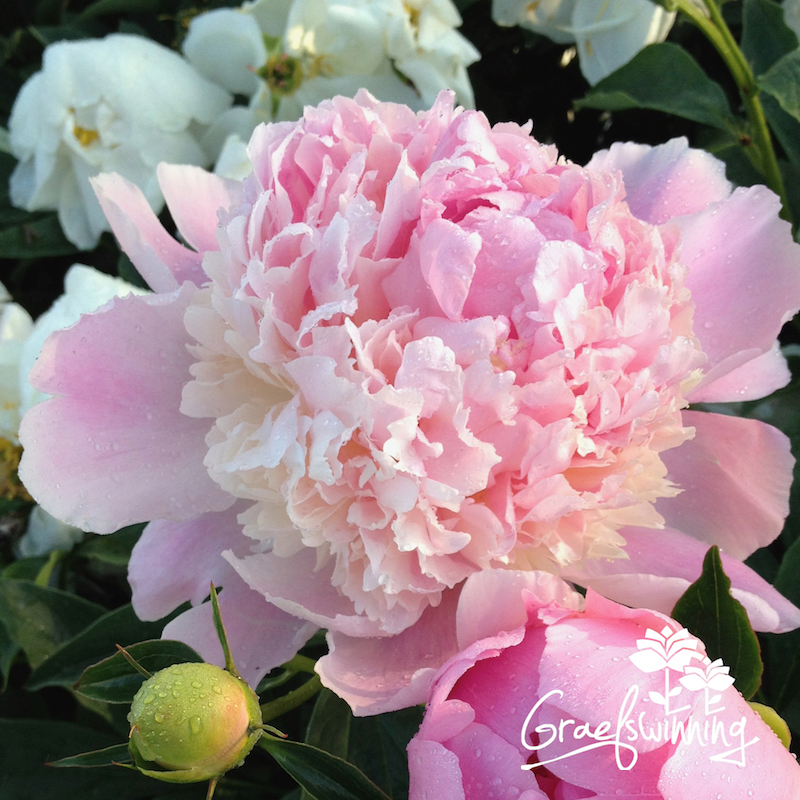Peony Flower Forms
The particular form a flower takes is specific to each variety. The plant's maturity and vigour play a key role in the production of flowers. A less advanced flower – with a limited number of petals and a small size – is often a sign of immaturity. A peony needs time to settle in. While healthy juvenile roots produce some flowers in their first spring, these are only a hint of what is still to come.
Peony flowers come in all shapes. Personal taste is an important reason for preferring one over another. There are other criteria, however, that are equally important when choosing a peony. The single and semi-double flowers of peonies are very often pollen bearing and therefore a true asset for bees and other pollinators in your garden. It is a feast for the eyes to watch shopaholic bees and bumblebees, with bags of pollen, ready for takeoff to hit the next available flower. Therefore, we also take this into account in our catalog.
 |
Single |
One or more rows of large flower petals enclose a circle of pollen bearing stamens. Multiple carpels – consisting of the ovary, style and stigma – are often found in the middle of this circle. |
 |
Semi-double |
An intermediate form between single and double flowers. An increasing number of stamens are converted into petals. The stamens and carpels, however, remain visible. The yellow centre remains an important feature of the flower. |
 |
Double |
Considered the classic peony form. This shape is made up of two complete rings of countless petals. The carpels are invisible and the stamens have virtually disappeared. |
 |
Japanese |
At first sight, the shape is similar to the single flower form. Several rows of petals surround a centre of stamens, which have been transformed into generally yellow staminodes. However, the flowers have no pollen. |
 |
Anemone |
Evolved from the Japanese flower form. The staminodes are again transformed, and very often take on the colour of the outer petals. Like double and bomb-type flowers, the flower is mostly mono-toned. The size of the inner circle is less prominent than a bomb shaped flower. |
 |
Bomb |
With the exception of the centre flower petals, the anatomy is identical to the anemone form. The centre petals have the same texture and colour as the larger outer petals. At the opening stage, the centre forms a neat ball, but expands to dramatic proportions once the flowers gain maturity. |
